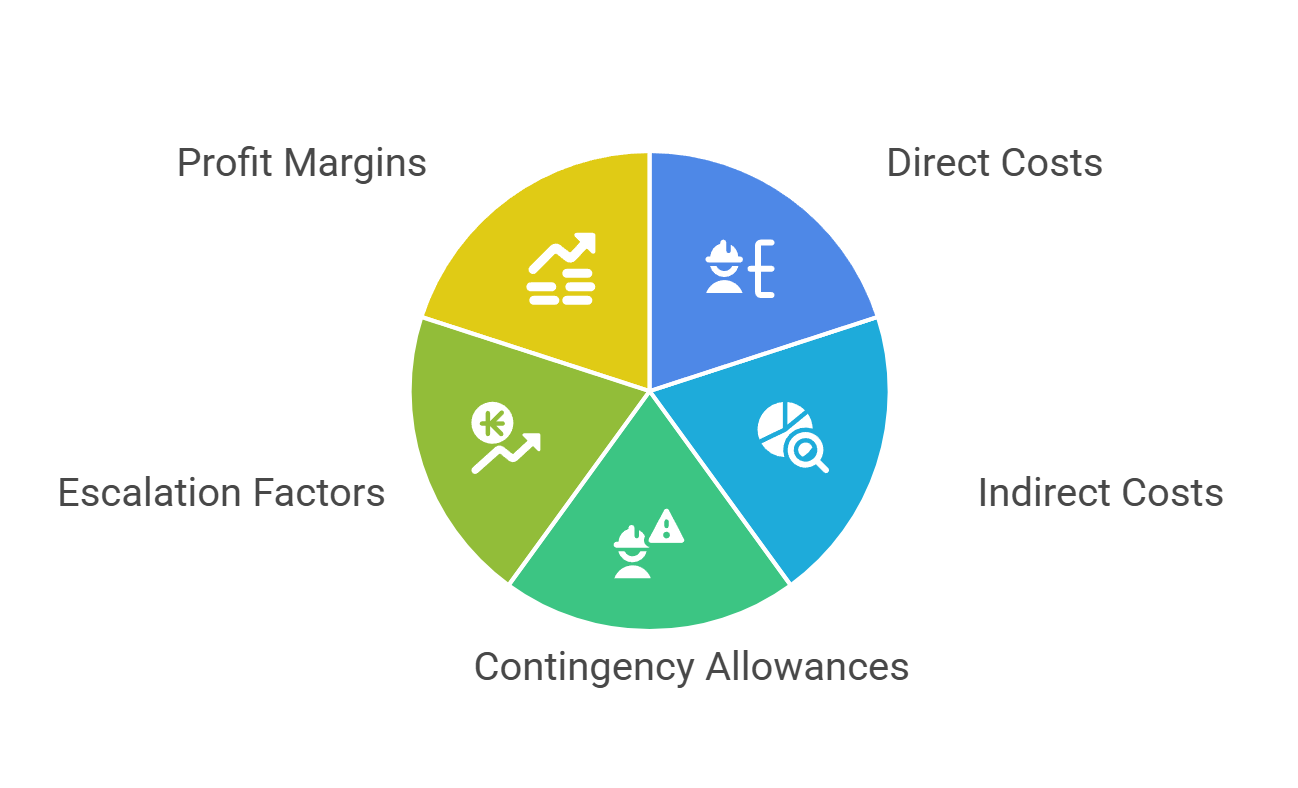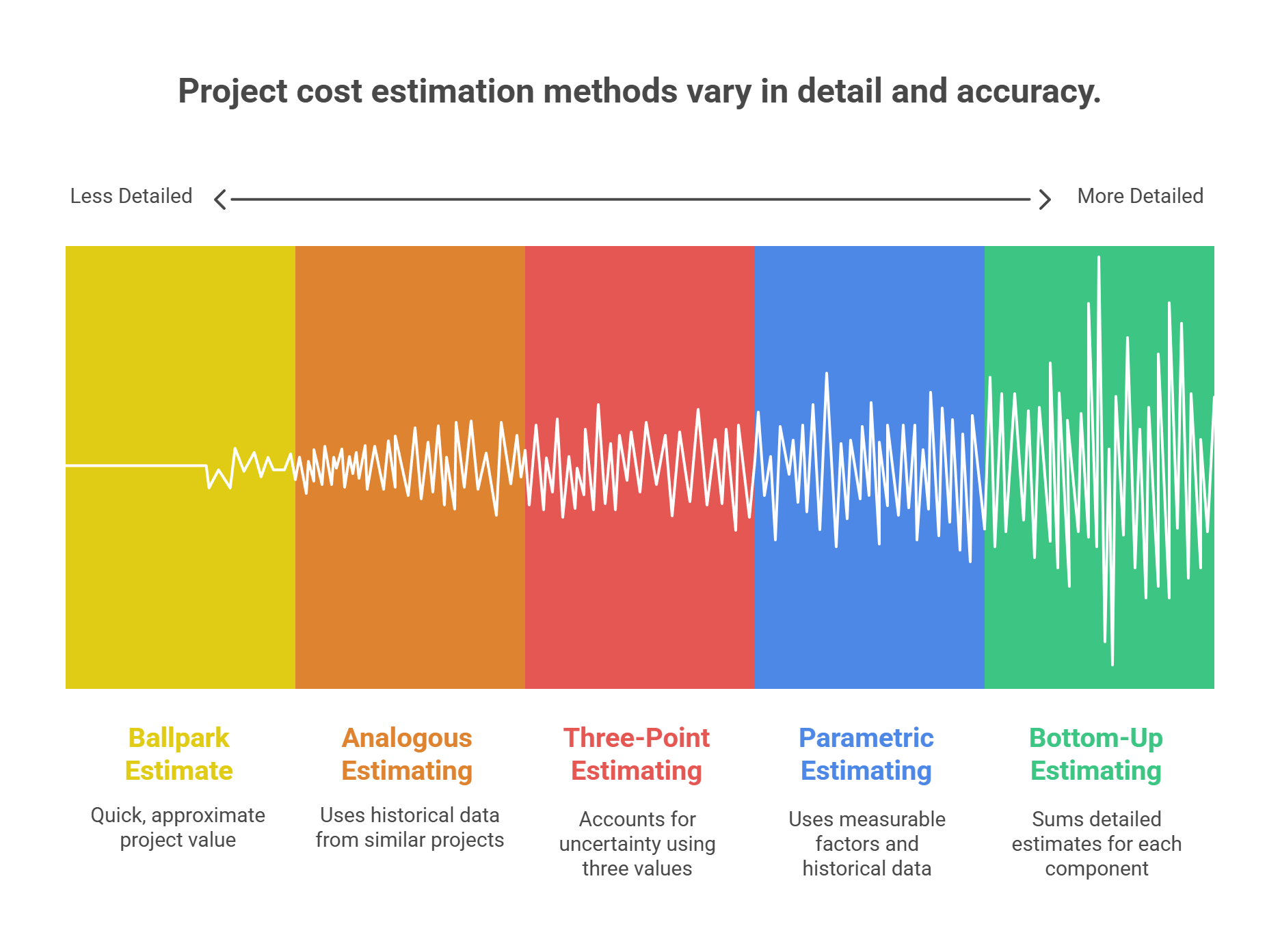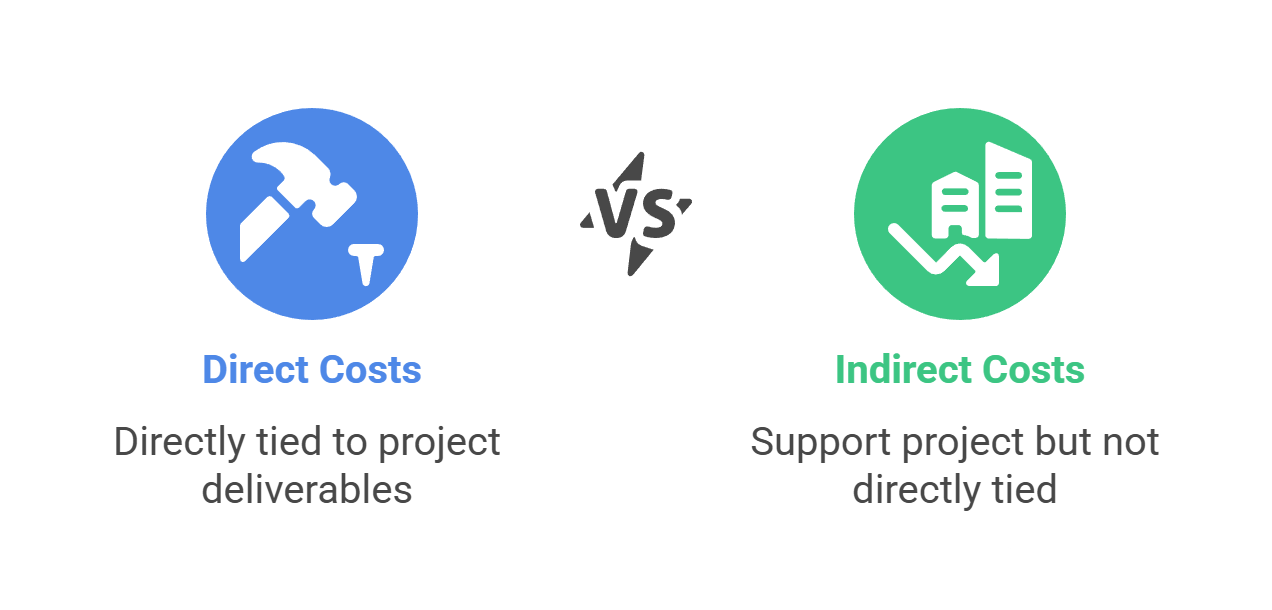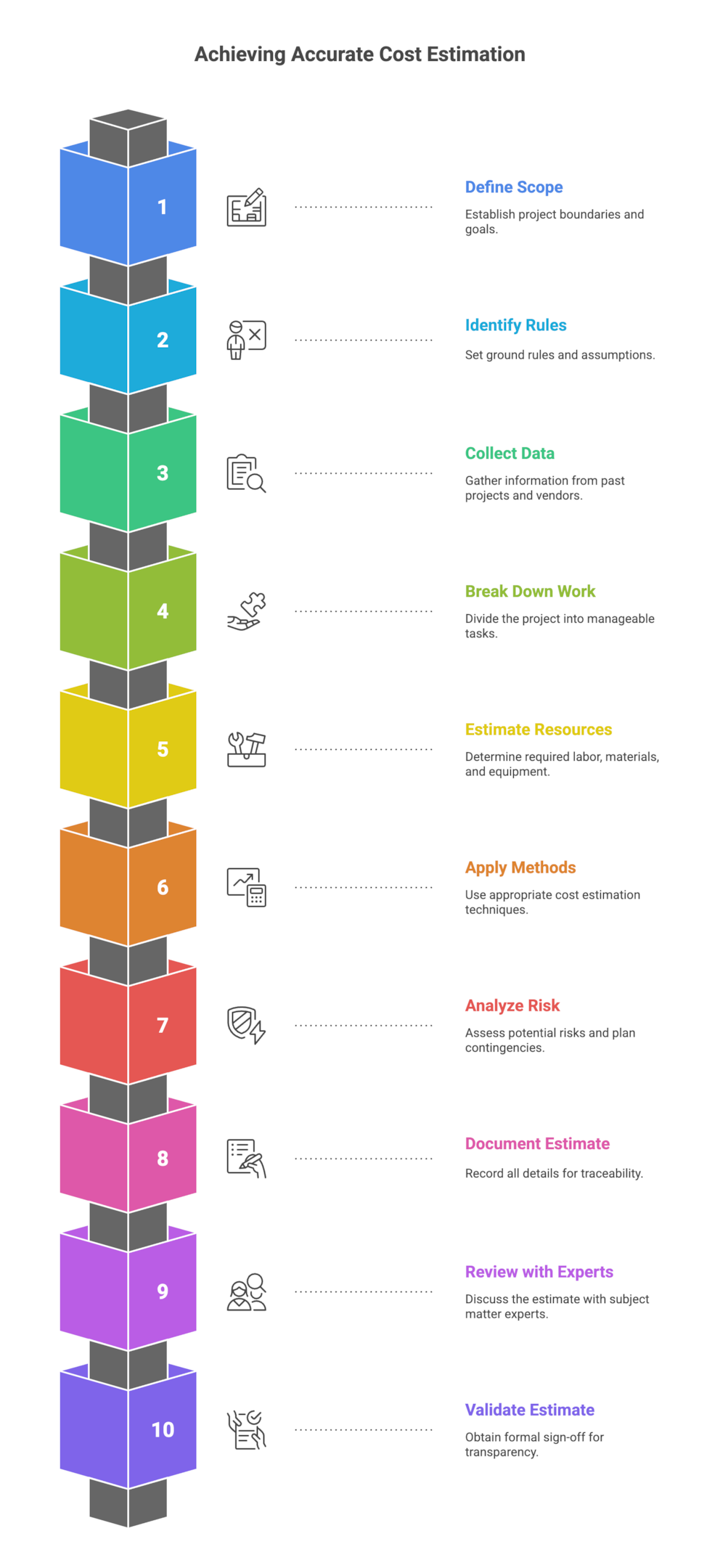

What is a Cost Estimate? Project Budgeting Guide
TL;DR: A cost estimate is a detailed, data-driven prediction of a project’s expenses that guides planning, budgeting, and decision making. Reliable cost estimates reduce financial risk, boost stakeholder confidence, and are essential for project management success. This article breaks down cost estimate types, components, cost estimating methods, and best practices, and covers how to harness modern tools for accurate cost estimation.
Introduction to Cost Estimation in Project Management
We’ve all been there. A major project lands on your desk, and almost instantly, someone asks, “How much will this project cost?” Relying on gut feelings or loose spreadsheets only leads to uncertainty and budget overruns. In modern project planning and control, having a comprehensive cost estimation process is crucial. Efficient cost estimation keeps project costs on track, reduces risk, and forms the backbone of decision making.
Accurate cost estimates are essential for project administration. When scope expands, unknown costs surface, or teams lack clarity, your timeline and bottom line are at risk. Complex projects, multi-location teams, and tight deadlines all require robust cost estimating methods. Cross-department collaboration can further complicate budget control, making consistent project cost management vital.
Imagine a setup where every team member works from the same data, and forecasting helps you steer instead of react. Modern cost estimating software brings together information, standardizes your process, and keeps everyone aligned. If you’re ready to move beyond outdated techniques, this guide explains how accurate cost estimation anchors project management success.
Why Cost Estimates Matter in Project Management

Cost estimates do more than fill a spreadsheet. They impact every financial decision within project management:
- Test whether a new project makes sense before diving in
- Build realistic budgets so resources, people, materials, equipment, are allocated wisely
- Sort out different options and choose the best one for your organization’s goals
- Establish a clear baseline for tracking actual costs as you go
- Identify potential problems early, allowing for proactive solutions
Accurate cost estimates inspire stakeholder confidence. Stakeholders want transparency, not surprises, and need to know when costs might occur and what to plan for at each stage.
Who Uses Cost Estimates and When
Cost estimates are vital for every participant in project management:
- Project managers rely on cost estimation to plan, schedule, and keep project costs on target
- Executives and business owners use cost estimates to prioritize projects and allocate funding
- Engineers and technical teams need detailed cost estimates for design and resource selection, often using advanced AI estimating solutions
- Finance teams include cost estimation in strategic budgets and forecasts
- Clients and stakeholders review cost estimates before approving funding and project kickoff
A cost estimation worflow is not one-and-done. As your project progresses, cost estimates evolve:
- In the conceptual phase, a rough cost estimate helps decide if an idea is worth pursuing. This early approximation can determine whether an organization greenlights a project.
- Planning brings more precise cost estimating methods that define the project budget and secure funding.
- During execution, actual costs replace early assumptions, with project managers updating estimates to reflect real spending and changing conditions.
- At closeout, comparing the initial estimate with actual costs offers lessons for improving future project management.
Early estimates have more uncertainty, but accuracy increases as details emerge. This natural evolution helps teams stay in control and minimize cost overruns.
Cost Estimate Definition and Core Elements
A cost estimate is the approximation of the cost of a project, program, or operation. In project management, it predicts what a project will cost, factoring in all resources required (labor, materials, equipment) and providing a foundation for decision making. The U.S. Government Accountability Office (GAO) defines a cost estimate as the summation of individual cost elements, using established methods and valid data.
What a Cost Estimate Includes

Comprehensive cost estimation accounts for each element required for the project:
- Direct costs: Immediate expenses, labor, materials, equipment, and core resources needed to deliver the project
- Indirect costs: Overhead, administrative support, insurance, essential for the project, but not tied to one task
- Contingency allowances: Budget set aside for risks or unknowns predicted by experience in similar projects
- Escalation factors: Adjustments for expected costs such as price increases during the project timeline
- Profit margins: Anticipated returns above base costs for commercial projects
The level of detail in a cost estimate depends on the project management stage. Early on, estimates are broad, based on past data or similar projects. As planning advances, the cost estimation workflow becomes more precise, leveraging vendor quotes and project-specific information. Using proven cost estimating software helps ensure all cost estimate components are included and the process remains efficient.
Cost Estimate vs. Budget vs. Forecast
It’s important in project management to distinguish these three terms:
- Cost estimate: An up-front prediction of project costs, based on current information. Used before official approval.
- Budget: The formally approved project cost baseline, used for tracking spending.
- Forecast: An updated projection during project execution, adjusting as real numbers come in.
Each serves a unique role within project management and the cost estimating process.
Types of Cost Estimates and Estimating Methods
Cost estimates shift depending on when you make them and what you know. Various types of cost estimating methods are used in project management.
Overview of Cost Estimating Methods

- Analogous estimating: A top-down method using historical data from similar past projects to estimate the cost of a new project. Quick, but less detailed.
- Parametric estimating: Uses measurable factors and historical data, such as cost per square foot or unit, to estimate each part of the project.
- Bottom-up estimating: Each task or component is estimated in detail, with the total project cost found by summing all elements.
- Three-point estimating: Projects cost using likely, optimistic, and pessimistic values to account for uncertainty.
- Ballpark estimate: Provides an approximate project value based on a mix of experience, similar projects, and unique factors.
A cost estimator is the professional responsible for conducting these estimations. Depending on project scale, cost estimation can be performed by an individual, a dedicated cost estimators team, or the project managers themselves.
Preliminary and Definitive Estimates
- Order-of-magnitude estimates are prepared when little or no design information is available. They typically have broad ranges of accuracy and are important for assessing project feasibility or funding needs.
- Preliminary estimates provide a rough approximation, used for initial budgeting or basic decision making. These are based on past projects and broad assumptions.
- Definitive estimates are built from fully designed plans and specifications, with narrow error margins. These are vital for formal budgeting and contracts.
- Schematic/conceptual, design development, construction document, and bid estimates each represent different design and planning phases, with increasing precision.
Key Cost Components of Cost Estimation
A trustworthy cost estimate breaks down every expense for full transparency.
Direct costs relate directly to the project’s deliverables:
- Project materials for building or fabrication
- Labor, project team members carrying out the work
- Equipment devoted to the project
- Specialized services needed for successful completion
Indirect costs support the project but cannot be directly tied to specific tasks:
- Overhead, such as office rent and utilities
- Administrative staff and general management
- Insurance and project-wide support expenses

Careful documentation and breakdown of direct costs and admin costs in your estimate helps ensure clarity, transparency, and gives your target audience an accurate understanding of the project’s total cost.
Lastly, we have Contingencies, Escalation, and Profit:
- Contingency: Extra funds for unforeseen costs. Including a contingency helps cover risks and is based on similar projects’ experience.
- Escalation: Adjustments for expected costs, like price increases in materials or labor over the project duration.
- Profit margins: For commercial work, the markup that builds sustainability into project finances.
Inputs and Data Sources in Cost Estimation
Successful cost estimation depends on collecting data from reliable sources.
Historical Cost Data and Past Projects
Historical data from past projects forms the basis for many cost estimating methods. Looking at similar projects helps project managers and cost estimators predict project expenses more accurately. Maintaining project records and cost libraries improves future cost estimation.
- Analogous estimating draws directly from historical data of similar projects to estimate new project costs.
- Parametric models also use past data to set formulas for current project estimation.
Takeoffs, Specifications, and Site Conditions
- Detailed takeoffs: Counting and measuring all resources and materials needed for the current project.
- Specifications: Clear documentation of quality, compliance, and technical requirements.
- Site conditions: Every project site is unique. Local hazards, access challenges, or infrastructure differences can affect costs.
The cost estimation process becomes more accurate when estimators gather information from project documents, similar projects, and real-world conditions. Collaboration between project managers, estimators, and technical experts ensures all cost elements are considered.
The Cost Estimating Process: Step-By-Step

A structured cost estimation process helps deliver accurate project costs. High-quality estimates follow these stages:
- Define the project scope and objectives
- Identify all ground rules and assumptions
- Collecting data from past projects and current vendors
- Break down the work into tasks or WBS elements
- Estimate the resources required (labor, materials, equipment) for each part
- Apply cost estimating methods best suited to the project phase
- Analyze risk, including contingency planning
- Document everything for traceability
- Review the estimate with subject matter experts
- Validate and gain formal sign-off for transparency and accountability
This process improves estimate quality and delivers transparency. Program evaluation and risk assessment are integrated steps. Using project management software can speed up data collection, analysis, and reporting, while complex projects may benefit from statistical cost modeling or integrated cost management systems.
Best Practices for Accurate Cost Estimates
Developing accurate project expenses calls for both technical skill and real-world experience:
- Use Three-Point Estimating and Range Forecasts: Employing three-point estimation and estimating costs as a range acknowledges uncertainty and prepares for risk. It helps project managers and stakeholders see best, worst, and most likely scenarios.
- Thorough Documentation: Maintain complete documentation, of methods, data sources, and assumptions, to ensure traceability and clarity.
- Peer Review and Validation: Having colleagues or third-party experts review your project cost estimate can reveal blind spots or optimistic assumptions. Regular review cycles and formal sign-off ensure each project’s total cost is credible and defensible.
Continual Learning from Past Projects
Studying similar projects, tracking actual costs versus estimating costs, and analyzing deviations help refine the cost estimation process over time.

Cost Estimating Software and Tools
Manual spreadsheets once ruled project management, but modern cost estimating software now provides huge advantages. Key benefits include:
- Pulling in real-time material, labor, and equipment prices
- Automating the cost estimation process for faster, more accurate work
- Modeling scenarios and visualizing outputs clearly for the target audience
- Allowing multi-user collaboration, review, and approvals
- Integrating historical data from past projects
Tools like CostOS offer functionalities to help teams achieve a comprehensive and accurate estimate at any project stage.
Importance of Accurate Cost Estimates in Decision Making
Accurate cost estimates are crucial for avoiding cost overruns and improving profit margins. They help project managers and organizations determine whether to proceed with a new project and significantly influence funding decisions. Strategic project management relies on accurate estimates for effective decision making, resource planning, and risk management.
A realistic budget depends on quality cost estimation. High-quality estimates support profit, minimize unknowns, and keep teams aligned.
Frequently Asked Questions
What is a cost estimate and why is it important?
A cost estimate is an approximation of the cost of a project, including all elements required, labor, materials, equipment, and a buffer for risks and unknowns. It is essential for project management, smart planning, decision making, and budget control.
What is the difference between a cost estimate, a budget, and a forecast?
A cost estimate is an informed guess at total costs based on what you know now. The budget is the approved spend plan tracked throughout the project. The forecast updates during execution as actual costs emerge and project changes occur.
How do preliminary and definitive estimates differ?
Preliminary estimates are early, broad, and based on limited data, valuable for initial decisions and funding. Definitive estimates are detailed, based on specific project information and are critical for contracts, control, and execution.
What are the key components of a cost estimate?
A solid cost estimate includes direct costs, overheads, contingencies for risk, escalation for anticipated costs, and profit margins, ensuring all critical project costs are covered.
How can cost estimating software improve accuracy?
Modern tools standardize methods, consolidate data, enable multi-user collaboration, update numbers instantly, and offer scenario modeling for sharper project management and cost estimation.
Conclusion: Building a Better Project Management Foundation
Cost estimation is a cornerstone of strategic project management. It combines technical methods, expert judgment, and lessons from past projects. Choosing the right cost estimation method and working through a structured cost estimation process leads to more accurate project cost estimation, fewer cost overruns, and better decision making.
Whether you’re launching a new project or refining your approach, prioritize accurate estimates, using every means available, from software tools to cost estimators’ expertise. Keep data and documentation comprehensive, engage in regular review, and always learn from past data and similar projects.
Curious about next-generation estimating? Explore Nomitech’s full suite of cost estimating solutions or contact our team to discover the right fit for your projects and workflows.




